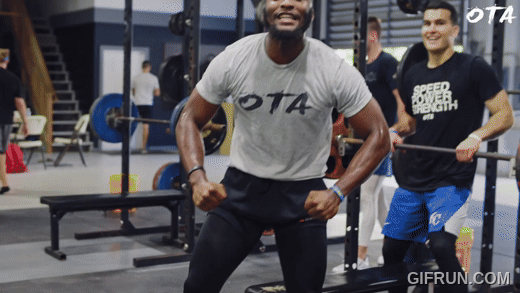Rotational Power Training with the Don’t Blink Home Run Derby Champ: Enhancing Throwing Mechanics and Power for Baseball Athletes
When it comes to baseball, one of the most critical skills is the ability to throw fast and hard. Whether you’re a pitcher trying to get a strikeout or an outfielder making an impressive throw to home plate, power and rotational strength are key. But how do baseball athletes build that kind of explosive power and rotational force?
In a recent training session with the Don’t Blink Home Run Derby champion, the focus was on rotational power training, ballistic movements, and building strength to enhance throwing mechanics. This session, designed specifically for baseball athletes, emphasizes developing overhead and rotational power — essential qualities that help players throw faster and harder.
Training Focus: Developing Rotational Force and Ballistic Movements
The foundation of this training session is to improve rotational power and ballistic movement. In baseball, throwing velocity is largely dependent on how efficiently an athlete can transfer energy through their body, especially from the ground up. Rotational force is critical because it dictates how well an athlete can generate power during a throw.
Rotational power is necessary for all types of throws — from a pitcher’s fastball to an outfielder’s throw across the diamond. By focusing on exercises that improve this specific movement, athletes can enhance their ability to throw harder and with more control.
During the session, the athletes focus on ballistic movements. This means movements that are designed to maximize the speed and power of the body. For instance, they incorporate exercises where they explosively throw medicine balls to simulate real-life throwing mechanics.
By honing in on these movements, athletes learn how to translate the energy created from their legs and core into upper body movement. This translates to stronger, faster throws that are vital in the game of baseball.
Med Ball Progressions: Building Power, Force, and Rotational Speed
One of the most effective ways to improve rotational power is through medicine ball (med ball) training. Med balls are used in various progressions during the session to help athletes develop the ability to rotate quickly and powerfully. Exercises like overhead seated soccer tosses, rotational throws, and crow hop drills focus on generating force and rotational speed, both of which are crucial for baseball performance.
The overhead seated soccer toss is one of the first exercises the athletes perform. In this movement, they sit on the ground, hold the med ball overhead, and toss it forward as explosively as possible. This exercise strengthens the muscles involved in generating overhead force, which is especially important for pitchers and catchers.
Another key movement is the rotational throw. This exercise requires the athlete to rotate their torso while throwing the med ball to a partner or against a wall. This mimics the rotational action needed during a baseball throw, allowing the athletes to work on generating force while maintaining control of the movement. The goal is to make the movement fluid and powerful, engaging the core muscles and hips, and improving overall rotational mechanics.
The crow hop drill, often used by outfielders, is another important med ball exercise. In this drill, athletes build momentum by taking a small hop forward and then explosively throwing the med ball, simulating the mechanics of a throw from the outfield. By incorporating this drill into the session, the athletes develop coordination, power, and speed.
Through these exercises, athletes can develop more explosive rotational power, which will carry over into their ability to throw with greater velocity and accuracy on the field.
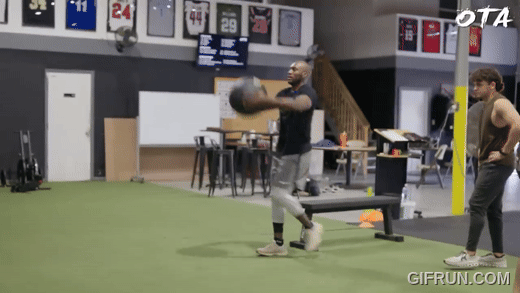
Ballistic and Rotational Movements: Generating Power from the Ground Up
In addition to med ball progressions, the session includes ballistic and rotational exercises that emphasize generating force from the ground up. The goal of these movements is to improve throwing mechanics by ensuring that the power comes from the legs and core before transferring to the upper body.
One key exercise in this portion of the workout is the half kneeling rotational throw. This exercise forces athletes to stabilize their lower body while generating rotational power through the core and upper body. Starting in a half kneeling position, athletes rotate their torso to throw the med ball explosively.
The half kneeling position mimics the position that many baseball players find themselves in when preparing to throw. Whether a pitcher is stepping into a pitch or an outfielder is gearing up to make a throw, this exercise helps build strength and coordination in the critical positions that players often use.
Another important exercise is the wall slam, which focuses on generating power from the hips and core. In this movement, athletes face a wall and throw the med ball into it as hard as they can, emphasizing the transfer of power from their legs, through their torso, and into their throwing arm. This drill helps improve the hip rotation and torso movement that are essential for fast and accurate throws.
By focusing on these ballistic and rotational movements, athletes improve their body’s ability to generate power from the ground up, leading to more forceful and efficient throws.
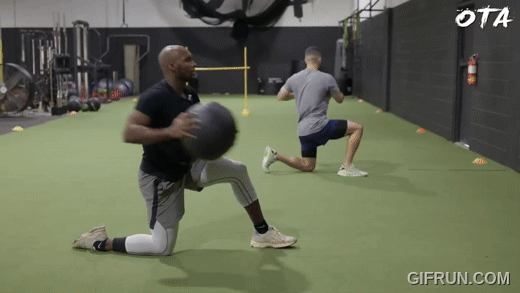
Strength Training: Building Shoulder Stability and Core Strength
While rotational power is critical for throwing velocity, an athlete’s strength and stability also play a significant role in their overall throwing performance. To complement the med ball and rotational exercises, the training session includes strength exercises designed to improve shoulder stability, core strength, and overall body coordination.
One such exercise is the alternating dumbbell press. This exercise helps strengthen the shoulders and upper body, improving an athlete’s ability to stabilize their arm during a throw. The alternating dumbbell press is performed on a bench, where athletes press one dumbbell overhead while maintaining a stable torso. The goal is to lock the shoulder blades in place and engage the core to maintain balance during the movement.
Another important exercise is the cable pull-down. This exercise targets the lats, which are essential for throwing power. To perform the cable pull-down, athletes hinge forward at the hips while pulling the cable down, simulating the movement of pulling the arm back before a throw. By strengthening the lats and improving shoulder stability, athletes can generate more controlled power when throwing.
The single-leg dumbbell Romanian deadlift (RDL) is also incorporated into the workout. This exercise targets the hamstrings, glutes, and core while improving balance and stability. The single-leg stance challenges the athlete’s body to work harder to stabilize and generate power through the lower body, which is essential for any throwing motion.
These strength exercises are integral to the training session, as they help athletes build the strength necessary to maintain control and stability during fast, powerful throws.
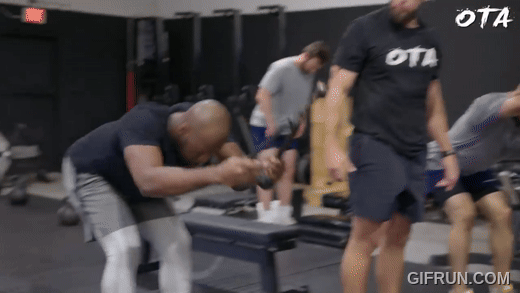
Final Drills and Reflections: Progress and Results
The session concludes with corrective movements and a reflection on the athletes’ progress. Exercises like step-ups, cross-body exercises, and deceleration drills help reinforce the body’s ability to move fluidly and efficiently. These movements also work to correct any imbalances or weaknesses that might impede an athlete’s throwing mechanics.
The coach takes a moment to reflect on the impressive progress made by the athletes. He notes that many of the athletes have shown significant improvement from the previous year, with some athletes seeing up to an 18% increase in their power and force production. This kind of progress is a testament to the effectiveness of rotational power training and its ability to drive meaningful improvements in throwing mechanics.
As the session wraps up, the athletes are encouraged to continue their work on rotational power and strength training to further enhance their throwing abilities.
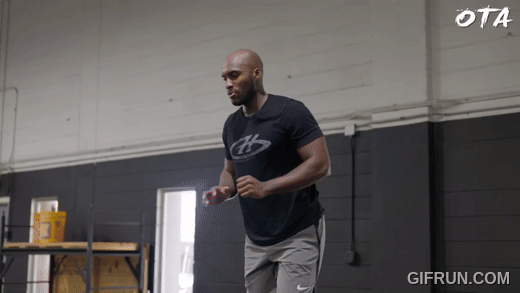
Conclusion: Enhancing Throwing Performance with Rotational Power Training
Rotational power training is an essential component of baseball performance. By focusing on exercises that improve ballistic movements, rotational speed, and strength, athletes can enhance their ability to throw faster, harder, and more accurately. The combination of med ball progressions, ballistic and rotational movements, and strength training provides a comprehensive approach to building the power and mechanics necessary for successful baseball performance.
With proper training and a focus on rotational power, athletes can unlock their full potential on the field and see significant improvements in their throwing abilities — just like the Don’t Blink Home Run Derby champ!
